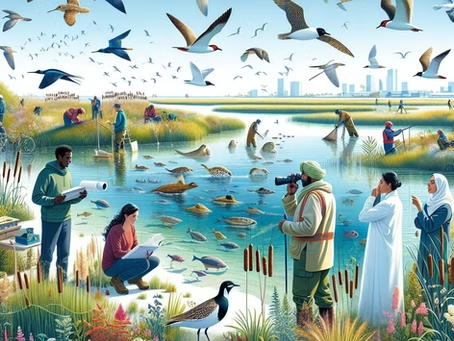Restoring Coastal Wetlands: Benefits for Wildlife and People
Coastal wetland restoration delivers significant ecological, economic, and social benefits, creating resilient ecosystems that support diverse wildlife while protecting human communities.
Ecological Benefits
- Biodiversity Enhancement: Supports 75% of commercial fish species during life cycles
- Water Purification: Filters pollutants and improves water quality naturally
- Carbon Sequestration: Stores carbon at rates exceeding terrestrial forests
Economic Advantages
Direct Financial Returns
- Every $1 invested generates $15+ in economic benefits
- Creates 17 jobs per $1 million invested (nearly double oil/gas sector)
- Enhances property values and tourism revenue
Infrastructure Protection
- Provides natural storm protection worth billions annually
- Reduces flood damage to coastal communities
- Decreases need for expensive artificial flood controls
Community Benefits
- Recreational Opportunities: Birdwatching, fishing, and ecotourism
- Educational Value: Living classrooms for environmental education
- Cultural Preservation: Maintains traditional ways of life
Restoration Challenges
Key considerations for successful projects:
- Balancing ecological and human needs
- Securing long-term funding and maintenance
- Addressing sea-level rise impacts
- Engaging local communities in planning
Success Factors
- Community involvement in planning and implementation
- Science-based restoration approaches
- Long-term monitoring and adaptive management
- Integration with broader watershed management
Coastal wetland restoration represents a smart investment in natural infrastructure that delivers multifaceted benefits for both ecosystems and human communities, creating more resilient coastlines for future generations.

